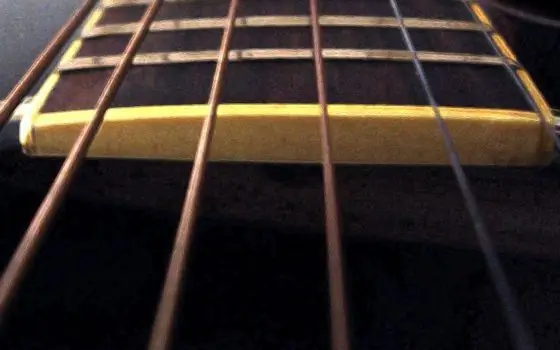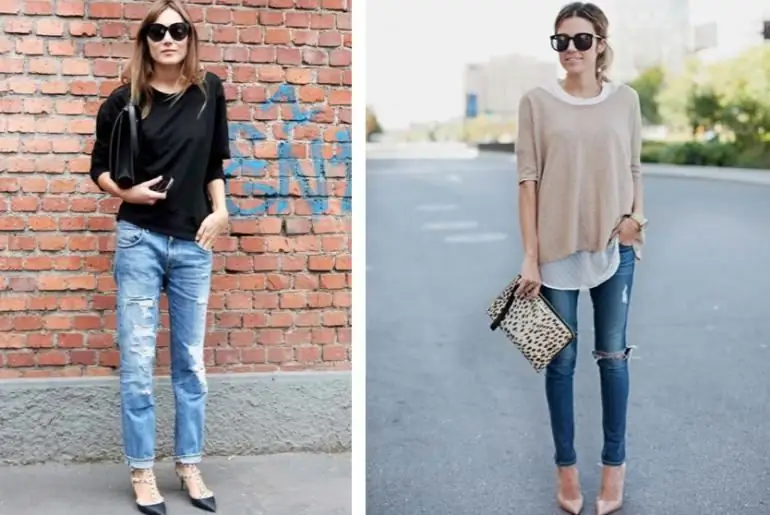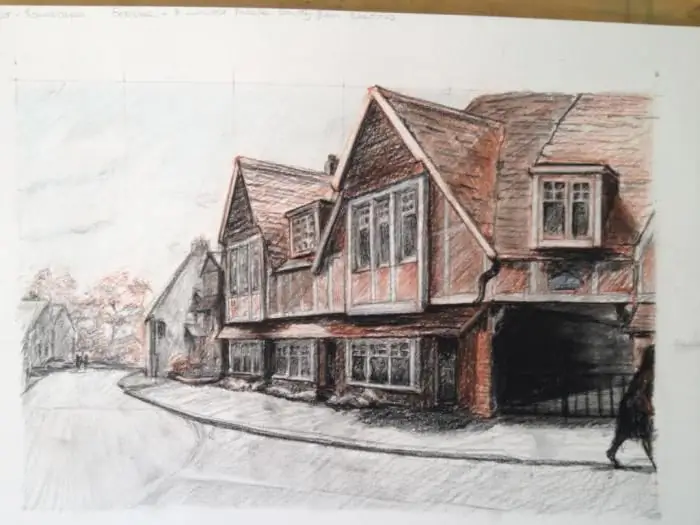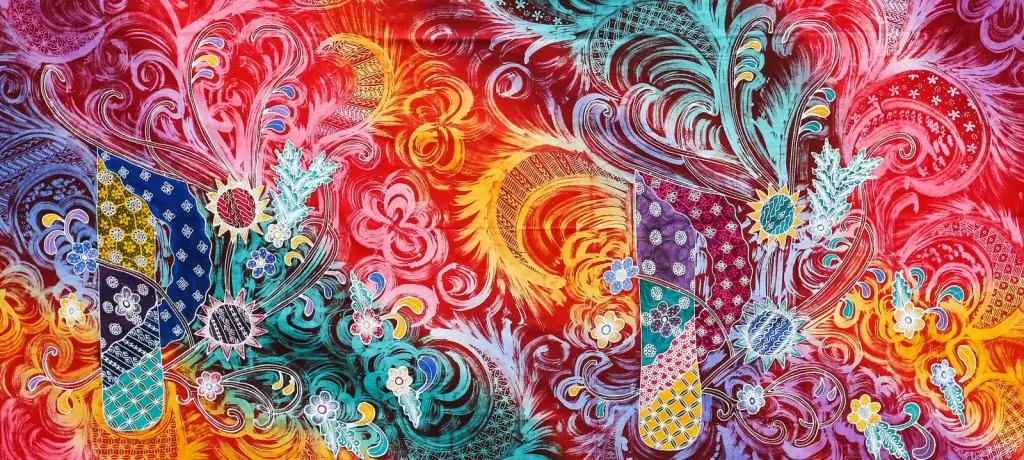2025 Author: Leah Sherlock | [email protected]. Last modified: 2025-01-24 17:46:36
Painting on fabric - or rather, batik - is not only a great way to try a new area of art, but also the opportunity to always have art with you: for example, applying an exclusive design to clothes, a bag or any accessory covered cloth. Also, a thing made of fabric, painted by yourself with paints, can be a wonderful and memorable gift.
Batik
Batik is a technique of painting on fabric using special non-washable materials. Such painting has been used by the peoples of India, Egypt and Indonesia since ancient times. Batik came to Europe only at the beginning of the 20th century, on the wave of passion for oriental and Egyptian themes in clothing and accessories.

There are three main types of batik painting. Hot batik is the oldest subspecies and is characterized by the use of colored wax as a reserve - a material that prevents the spreading of paints, with which the borders of the pattern are made. The very word "batik" in translation from Indonesian means "wax". Hot batik is best suited for cotton fabrics and is done using hot wax, which is removed after the painting is completed on the fabric. Only an experienced artist or personal experience of trial and error will tell you how to remove wax without damaging the drawing.
Cold and loose batik
The cold batik technique is the most common today, suitable for silk and other similar materials. This mural uses a special reserve based on gasoline or rubber. Gasoline is applied using a special glass reservoir tube, and rubber is applied from a plastic tube with a thin nose. Cold batik is created in one layer with a special aniline paint on fabric ("Decola" is the most popular brand of such paints). The final drawing resembles wet watercolor. Below is a silk scarf painted using this technique.

Free painting is also quite popular, but also the most difficult - it is distinguished by its execution on a wet canvas without preliminary application of a reserve, which makes the drawing unique, with soft, flowing color borders. Applicable to silk and synthetic fabrics, can also be done with aniline dyes or a mixture of oil and solvent.
Which paint to choose?
As soon as you decide on the technique and type of material, you need to choose a paint for further painting. The most common and belovedbeginners and professional artists is aniline paint on fabric "Decola". It has a reasonable price and is suitable for all types of batik, and also has types that do not require the use of a reserve.

A good choice for cold and loose batik is Silk paint - in translation, the word silk means silk, which means that paint is best used for painting silk and similar fabrics. It is very liquid, so a fixative is necessary for it. The paint of the Textil company also reports on the method of application with its name - it is ideal for textiles. It is thick and does not require a fixer, suitable for painting T-shirts or furniture.
Tools for the job
When painting in classical batik techniques, first of all, you need to take care of the reserve. You can make it yourself, but it is better to purchase it in an art store. Then, depending on the chosen technique, it is necessary to prepare the tools: for example, a reserve tube and brushes. The stiffness and shape of the brushes depend on the style of the drawing itself, the batik technique used, the paint and the material on which it will be applied.

Preparation for work
Having decided on the paint, technique and materials, you can get to work. For beginners, it is best to watch a few video tutorials or attend a batik master class.
First of all, you need to wash the fabric, otherwise it may sit down during work, ruining the pattern. The fabric is thenput on a frame or easel. If you plan to paint a piece of clothing, you need to create a layer between the front and back parts, for example, by laying cardboard. To prevent the drawing from slipping while drawing on the fabric, somehow you need to fix it, for example, fasten it with pins.
Before applying the pattern to the fabric, you need to work it out on paper (including color solutions, since it is almost impossible to fix the same cold batik). You can transfer the template to the fabric using a stencil, soft pencil, chalk or an erasable pen - depending on the color of the material. There can be no patterns in the free batik technique - here you need to improvise by creating a pattern on the fabric.

How to work in batik technique?
The first rule of batik is slowness and caution. Free technique can be started immediately after bringing the fabric to the required state of moisture. In hot and cold batik, first of all, all the contours of the pattern are outlined with a reserve. There should not be a single gap in the outline - otherwise the paint will simply flow out through it. When the contour is finished, you should wait for it to dry completely.

And finally, creativity begins! For beginner fabric artists, paint in a tube is suitable - like a rubber-based reserve, it is applied through a thin nose, which prevents unwanted smudges. In cold technique, work with a brush should be the same as in watercolor - the density and shades of the picture depend on the amount of paint. In hot batik, work longer, but a littleeasier - here the paint is applied in several layers, it is possible to correct a mistake or colors.
Drawing on fabric, as well as on paper, is most important for inspiration. So do not be afraid - if you have an idea and desire, everything will definitely work out.
Recommended:
Metal strings: types of strings, their purpose, features of choice, installation and tuning on the guitar

It is the string in this type of musical instrument that is the main source of sound, due to the tension of which you can adjust its height. Of course, how the instrument sings depends on the quality of these elements. The guitar is no exception in this case. The material, of course, is of great importance. There are nylon, metal strings, but which ones are better to choose? Read about it below
The right combination of colors: selection of colors, choice of shades, combination rules

In the modern world, each person tries to emphasize his individuality, to stand out from the crowd. As they say, they meet by clothes … And most often this is true. What do you pay attention to when you look at passers-by, for example, through the window?
Types of drawings and painting: art materials

Types of drawings. The difference between drawing and painting. Technique of working with various art materials: pencils, felt-tip pens, sanguine, charcoal, paints
Elena Lenskaya. A fashion designer who feels color, fabric texture and silhouette

Elena Lenskaya is a talented designer and fashion designer who managed to make a name for herself in Moscow and beyond in a short time
How to draw an aster in different techniques and on different materials

For many people, creativity is the main meaning of life. People strive for self-expression through music, poetry and, of course, drawing. If you are far from art, but want to join it, this article is just for you. Today we will tell you how to draw an aster in different techniques and on different materials

